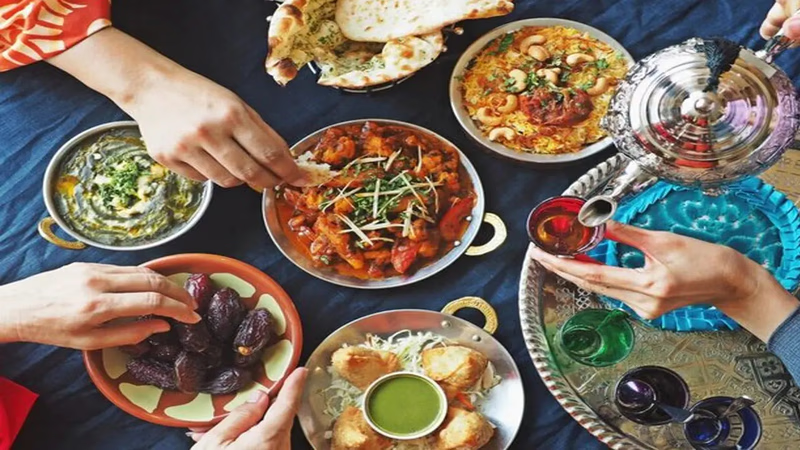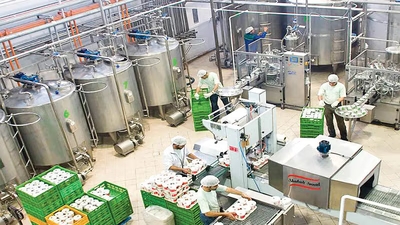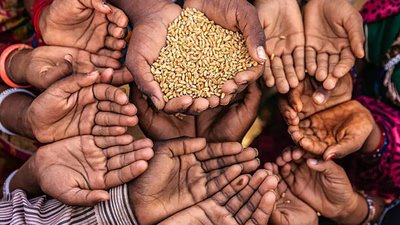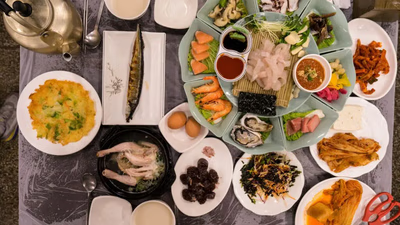
Middle Eastern cuisine features halal dishes and rich spices.
Halal refers to food that is permissible according to Islamic law. Muslims in the Middle East follow halal dietary guidelines, which include abstaining from pork and its by-products, alcohol, and any food items that are not prepared or slaughtered according to specific Islamic rituals. Halal certification ensures that the food meets these requirements. The Middle Eastern cuisine relies heavily on staple foods such as rice, wheat, barley, and legumes. Rice is a common ingredient and is often served as a pilaf or served with meat and vegetable dishes. Flatbreads like pita, lavash, and naan are also widely consumed.
Food and nutrition have been taken into consideration in religious teachings like other subjects. The origin of food is from God, which is given to humans for health, continuity of life and ability to perform tasks. Explaining how to eat and drink and use divine blessings is one of the most important categories of Islamic lifestyle. Hospitality is very important for the followers of Islam because according to the teachings of Islam, those who receive their guests well will find a high position. One of the manifestations of hospitality is to roast an animal whole. Roasting lamb and goat is very common, but some primitive tribal families even roast a whole camel.
Middle Eastern cuisine utilizes various cooking methods. Grilling and roasting are popular, as seen in dishes like shawarma and kebabs. Slow cooking in clay pots, known as tagines, is common in North African cuisine. Tandoori ovens are used for baking bread and preparing dishes like tandoori chicken. Halal refers to foods that are allowed to be consumed in Islam. Halal is also the title of a set of trade mark (brand) names that are included on food products. This name is derived from the meaning of halal food, which is mentioned in the religion of Islam, and the first halal food products were created in Malaysia. In recent years, this food trademark has been introduced as a global trademark by Islamic countries in the world, so that it has been well received in non-Islamic countries as well.
Fresh, healthy, nutritious, rich in substances necessary for the body and aromatic are the characteristics that have made Middle Eastern cuisine famous in the world. Today, the people of the world are interested in getting recipes for these dishes. Middle Eastern food has many surprises hidden in it, so to test the best taste of the food, it is better to eat it in the traditional way. Considering the freshness, health, nutrition and aromatic nature of Middle Eastern foods, it is not surprising that in the last decade, the people of the world have developed a strong desire to consume this type of food.
Mezze is a popular style of dining in the Middle East, consisting of small, flavorful dishes served as appetizers or shared plates. It includes a variety of dips such as hummus, baba ghanoush, and tzatziki, as well as salads, stuffed grape leaves, falafel, and kebabs. In North African countries like Morocco, Algeria, and Tunisia, couscous is a staple food made from semolina wheat. It is often served with stews, vegetables, and meat, and is central to their culinary traditions. Other grains like bulgur, freekeh, and quinoa are also used in various dishes. Middle Eastern cuisine is known for its rich and aromatic spices and herbs. Commonly used spices include cumin, coriander, turmeric, cinnamon, cardamom, and sumac. Herbs like parsley, mint, dill, and cilantro are used as garnishes or incorporated into dishes.
Lamb and chicken are the most commonly consumed meats in Middle Eastern cuisine. They are used in various dishes such as grilled kebabs, stews like lamb tagine, and roasted or spiced chicken dishes. Beef and fish are also consumed, although to a lesser extent. Middle Eastern cuisine has a wide range of sweet treats and desserts. Baklava, a pastry made of layers of filo pastry filled with nuts and sweet syrup, is an iconic dessert. Other popular desserts include kunefe, halva, maamoul (filled cookies), and rosewater-flavored sweets. Middle Eastern countries have a strong coffee and tea culture. Arabica coffee, often flavored with cardamom, is traditionally prepared in a coffee pot called a dallah and served in small cups. Tea, especially black tea with mint, is also commonly consumed and served as a sign of hospitality.
-

West Asian countries are advancing their food production through modern agricultural practices, including advanced irrigation, hydroponics, and greenhouse cultivation. These methods optimize water use and increase crop yields, particularly in arid regions. The region is also seeing a rise in organic farming, driven by consumer demand for healthier options and sustainable practices. To enhance food safety, traceability systems are being implemented, allowing for the tracking of food products from farm to consumer. The growth of food technology startups is transforming the industry, utilizing AI, blockchain, and data analytics for improved production and distribution. The food packaging industry is evolving, focusing on modern devices to reduce human intervention and enhance efficiency. With a diverse food industry that includes sectors from dairy to snacks, the emphasis on quality packaging and storage methods is crucial for maintaining product integrity. Governments are enforcing stricter food safety regulations, while investments in food processing technologies are increasing.
This includes the development of ready-to-eat meals and convenience foods to meet changing consumer lifestyles. Sustainable packaging solutions are gaining traction, with techniques like modified atmosphere packaging being adopted to prolong shelf life. Additionally, robust cold chain infrastructures are being established to ensure the quality of perishable goods, reflecting a commitment to food safety and quality in the region.
-

Water scarcity is a pressing issue in the Middle East, impacting agricultural productivity and food security. Countries in the region are increasingly reliant on food imports to satisfy domestic needs, leading to vulnerabilities in the face of global price fluctuations and supply chain disruptions, as highlighted during the COVID-19 pandemic. Innovative solutions such as water desalination and drip irrigation are being implemented to mitigate water scarcity. The food industry plays a crucial role in employment and economic value creation in West Asia, with potential for growth due to favorable agricultural conditions and access to quality raw materials. However, ongoing conflicts, such as the war in Syria and the Ukraine crisis, exacerbate food insecurity by disrupting grain supplies and increasing prices. Malnutrition and dietary challenges persist, driven by lifestyle changes and economic factors. Climate change poses additional risks, affecting agricultural productivity and livestock rearing. Addressing food waste is also critical, as significant losses occur throughout the supply chain. Overall, enhancing local agricultural production, diversifying food sources, and implementing sustainable practices are vital for improving food security in the Middle East.
-

Halal food, essential in Middle Eastern cuisine, adheres to Islamic dietary laws, prohibiting pork and alcohol while emphasizing specific preparation methods. Staples like rice, wheat, and legumes form the foundation of many dishes, complemented by flatbreads such as pita and naan. Hospitality is paramount, often showcased through communal meals featuring roasted meats. The cuisine is characterized by grilling, roasting, and slow cooking, with popular dishes including shawarma and kebabs. Middle Eastern food is renowned for its freshness, health benefits, and aromatic qualities, leading to a global interest in its recipes. Mezze, a style of dining with small shared plates, highlights various dips and appetizers. Spices like cumin and cardamom, alongside herbs such as parsley and mint, enhance the flavors of lamb, chicken, and beef dishes. Desserts like baklava and kunefe showcase the region"s rich culinary traditions.
Coffee and tea play significant roles in social interactions, with traditional preparation methods reflecting the region"s hospitality culture. The global appeal of Middle Eastern cuisine continues to grow, driven by its unique flavors and health-conscious ingredients.
-

Asian cuisine is characterized by its diversity and bold flavors, with rice and noodles as staples across many countries. Fresh, seasonal ingredients play a vital role, enhancing both taste and nutritional value. Cooking techniques like stir-frying preserve the texture and nutrients of food. The Asian food market is rapidly expanding, projected to double to over $8 trillion by 2030, driven by a growing middle class and increasing consumer spending. The return of restaurant dining post-pandemic has further fueled this growth. Countries like Japan and Thailand are seeing a rise in food enthusiasts, impacting the global food industry. Street food culture is integral, showcasing local flavors and offering diverse options. Each region has unique culinary traditions, with common elements such as the use of various condiments and spices.
As consumer health awareness rises, there is a shift towards plant-based alternatives, particularly in markets like Singapore, Japan, and China. The food industry in Asia, especially in basic products and seasonings, significantly contributes to the region"s economic prosperity."
-

West Asia faces significant challenges in food production due to arid climates, limited water resources, and urbanization, which restrict agricultural activities. The region"s reliance on food imports makes it vulnerable to global price fluctuations and trade disruptions. Climate change exacerbates these issues, leading to crop failures and livestock losses. Political instability further complicates the situation, disrupting supply chains and causing food shortages. The ongoing conflict in several Middle Eastern countries has led to high food prices and increased food insecurity. The region"s growing population and shifting dietary preferences towards resource-intensive foods heighten the demand for a diverse and sustainable food production system. Inadequate infrastructure and post-harvest management contribute to significant food waste, compounding the challenges of ensuring food security. As countries like Morocco leverage their fertilizer production capabilities, there is a pressing need for effective monitoring of food supply chains and strategic regulation to support local producers and meet consumer needs.
The food industry, while essential, faces pressures that often compromise product quality. Companies like Poya Vision prioritize health and quality in food imports, highlighting the importance of sustainable practices in addressing the region"s food security challenges."
-

Asian food manufacturers produce a wide range of products, including snacks, beverages, and processed foods, reflecting the diverse cuisines of the region. They blend traditional recipes with modern technology to ensure authenticity while meeting contemporary demands for convenience and quality. These manufacturers adhere to strict quality and safety standards, following local regulations and global certifications like ISO and HACCP. With advanced production facilities and a strong export-oriented approach, they cater to both domestic and international markets. Many engage in private label and contract manufacturing, allowing them to customize products for retailers and food service providers. Sustainability and traceability are increasingly prioritized, with manufacturers adopting eco-friendly practices and implementing systems to ensure product authenticity. Research and development play a crucial role in introducing innovative products that align with evolving consumer preferences. Notable companies like Mitsubishi and Tsing Tao lead the industry, showcasing the prominence of Asian food brands globally. Overall, the Asian food manufacturing sector is a dynamic and growing hub, contributing significantly to the global food supply.






